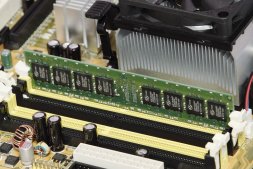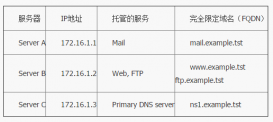简单分析了linux下system函数的相关内容,具体内容如下
|
1
2
3
4
5
6
7
8
9
10
11
|
int__libc_system (const char *line){ if (line == NULL) /* Check that we have a command processor available. It might not be available after a chroot(), for example. */ return do_system ("exit 0") == 0; return do_system (line);}weak_alias (__libc_system, system) |
代码位于glibc/sysdeps/posix/system.c,这里system是__libc_system的弱别名,而__libc_system是do_system的前端函数,进行了参数的检查,接下来看do_system函数。
|
1
2
3
4
5
6
7
8
9
10
11
12
13
14
15
16
17
18
19
20
21
22
23
24
25
26
27
28
29
30
31
32
33
34
35
36
37
38
39
40
41
42
43
44
45
46
47
48
49
50
51
52
53
54
55
56
57
58
59
60
61
62
63
64
65
66
67
68
69
70
71
72
73
74
75
76
77
78
79
80
81
82
83
84
85
86
87
88
89
90
91
92
93
94
95
96
97
98
99
100
101
102
103
104
105
106
107
108
109
110
111
112
113
114
115
116
117
118
119
120
121
122
123
124
|
static intdo_system (const char *line){ int status, save; pid_t pid; struct sigaction sa;#ifndef _LIBC_REENTRANT struct sigaction intr, quit;#endif sigset_t omask; sa.sa_handler = SIG_IGN; sa.sa_flags = 0; __sigemptyset (&sa.sa_mask); DO_LOCK (); if (ADD_REF () == 0) { if (__sigaction (SIGINT, &sa, &intr) < 0) { (void) SUB_REF (); goto out; } if (__sigaction (SIGQUIT, &sa, &quit) < 0) { save = errno; (void) SUB_REF (); goto out_restore_sigint; } } DO_UNLOCK (); /* We reuse the bitmap in the 'sa' structure. */ __sigaddset (&sa.sa_mask, SIGCHLD); save = errno; if (__sigprocmask (SIG_BLOCK, &sa.sa_mask, &omask) < 0) {#ifndef _LIBC if (errno == ENOSYS) __set_errno (save); else#endif { DO_LOCK (); if (SUB_REF () == 0) { save = errno; (void) __sigaction (SIGQUIT, &quit, (struct sigaction *) NULL); out_restore_sigint: (void) __sigaction (SIGINT, &intr, (struct sigaction *) NULL); __set_errno (save); } out: DO_UNLOCK (); return -1; } }#ifdef CLEANUP_HANDLER CLEANUP_HANDLER;#endif#ifdef FORK pid = FORK ();#else pid = __fork ();#endif if (pid == (pid_t) 0) { /* Child side. */ const char *new_argv[4]; new_argv[0] = SHELL_NAME; new_argv[1] = "-c"; new_argv[2] = line; new_argv[3] = NULL; /* Restore the signals. */ (void) __sigaction (SIGINT, &intr, (struct sigaction *) NULL); (void) __sigaction (SIGQUIT, &quit, (struct sigaction *) NULL); (void) __sigprocmask (SIG_SETMASK, &omask, (sigset_t *) NULL); INIT_LOCK (); /* Exec the shell. */ (void) __execve (SHELL_PATH, (char *const *) new_argv, __environ); _exit (127); } else if (pid < (pid_t) 0) /* The fork failed. */ status = -1; else /* Parent side. */ { /* Note the system() is a cancellation point. But since we call waitpid() which itself is a cancellation point we do not have to do anything here. */ if (TEMP_FAILURE_RETRY (__waitpid (pid, &status, 0)) != pid) status = -1; }#ifdef CLEANUP_HANDLER CLEANUP_RESET;#endif save = errno; DO_LOCK (); if ((SUB_REF () == 0 && (__sigaction (SIGINT, &intr, (struct sigaction *) NULL) | __sigaction (SIGQUIT, &quit, (struct sigaction *) NULL)) != 0) || __sigprocmask (SIG_SETMASK, &omask, (sigset_t *) NULL) != 0) {#ifndef _LIBC /* glibc cannot be used on systems without waitpid. */ if (errno == ENOSYS) __set_errno (save); else#endif status = -1; } DO_UNLOCK (); return status;}do_system |
首先函数设置了一些信号处理程序,来处理SIGINT和SIGQUIT信号,此处我们不过多关心,关键代码段在这里
|
1
2
3
4
5
6
7
8
9
10
11
12
13
14
15
16
17
18
19
20
21
22
23
24
25
26
27
28
29
30
31
32
33
34
35
36
|
#ifdef FORK pid = FORK ();#else pid = __fork ();#endif if (pid == (pid_t) 0) { /* Child side. */ const char *new_argv[4]; new_argv[0] = SHELL_NAME; new_argv[1] = "-c"; new_argv[2] = line; new_argv[3] = NULL; /* Restore the signals. */ (void) __sigaction (SIGINT, &intr, (struct sigaction *) NULL); (void) __sigaction (SIGQUIT, &quit, (struct sigaction *) NULL); (void) __sigprocmask (SIG_SETMASK, &omask, (sigset_t *) NULL); INIT_LOCK (); /* Exec the shell. */ (void) __execve (SHELL_PATH, (char *const *) new_argv, __environ); _exit (127); } else if (pid < (pid_t) 0) /* The fork failed. */ status = -1; else /* Parent side. */ { /* Note the system() is a cancellation point. But since we call waitpid() which itself is a cancellation point we do not have to do anything here. */ if (TEMP_FAILURE_RETRY (__waitpid (pid, &status, 0)) != pid) status = -1; } |
首先通过前端函数调用系统调用fork产生一个子进程,其中fork有两个返回值,对父进程返回子进程的pid,对子进程返回0。所以子进程执行6-24行代码,父进程执行30-35行代码。
子进程的逻辑非常清晰,调用execve执行SHELL_PATH指定的程序,参数通过new_argv传递,环境变量为全局变量__environ。
其中SHELL_PATH和SHELL_NAME定义如下
|
1
2
|
#define SHELL_PATH "/bin/sh" /* Path of the shell. */#define SHELL_NAME "sh" /* Name to give it. */ |
其实就是生成一个子进程调用/bin/sh -c "命令"来执行向system传入的命令。
下面其实是我研究system函数的原因与重点:
在CTF的pwn题中,通过栈溢出调用system函数有时会失败,听师傅们说是环境变量被覆盖,但是一直都是懵懂,今天深入学习了一下,总算搞明白了。
在这里system函数需要的环境变量储存在全局变量__environ中,那么这个变量的内容是什么呢。
__environ是在glibc/csu/libc-start.c中定义的,我们来看几个关键语句。
|
1
|
# define LIBC_START_MAIN __libc_start_main |
__libc_start_main是_start调用的函数,这涉及到程序开始时的一些初始化工作,对这些名词不了解的话可以看一下这篇文章。接下来看LIBC_START_MAIN函数。
|
1
2
3
4
5
6
7
8
9
10
11
12
13
14
15
16
17
18
19
20
21
22
23
24
25
26
27
28
29
30
31
|
STATIC intLIBC_START_MAIN (int (*main) (int, char **, char ** MAIN_AUXVEC_DECL), int argc, char **argv,#ifdef LIBC_START_MAIN_AUXVEC_ARG ElfW(auxv_t) *auxvec,#endif __typeof (main) init, void (*fini) (void), void (*rtld_fini) (void), void *stack_end){ /* Result of the 'main' function. */ int result; __libc_multiple_libcs = &_dl_starting_up && !_dl_starting_up;#ifndef SHARED char **ev = &argv[argc + 1]; __environ = ev; /* Store the lowest stack address. This is done in ld.so if this is the code for the DSO. */ __libc_stack_end = stack_end; ...... /* Nothing fancy, just call the function. */ result = main (argc, argv, __environ MAIN_AUXVEC_PARAM);#endif exit (result);} |
我们可以看到,在没有define SHARED的情况下,在第19行定义了__environ的值。启动程序调用LIBC_START_MAIN之前,会先将环境变量和argv中的字符串保存起来(其实是保存到栈上),然后依次将环境变量中各项字符串的地址,argv中各项字符串的地址和argc入栈,所以环境变量数组一定位于argv数组的正后方,以一个空地址间隔。所以第17行的&argv[argc + 1]语句就是取环境变量数组在栈上的首地址,保存到ev中,最终保存到__environ中。第203行调用main函数,会将__environ的值入栈,这个被栈溢出覆盖掉没什么问题,只要保证__environ中的地址处不被覆盖即可。
所以,当栈溢出的长度过大,溢出的内容覆盖了__environ中地址中的重要内容时,调用system函数就会失败。具体环境变量距离溢出地址有多远,可以通过在_start中下断查看。
以上就是本文的全部内容,希望对大家的学习有所帮助,也希望大家多多支持服务器之家。














